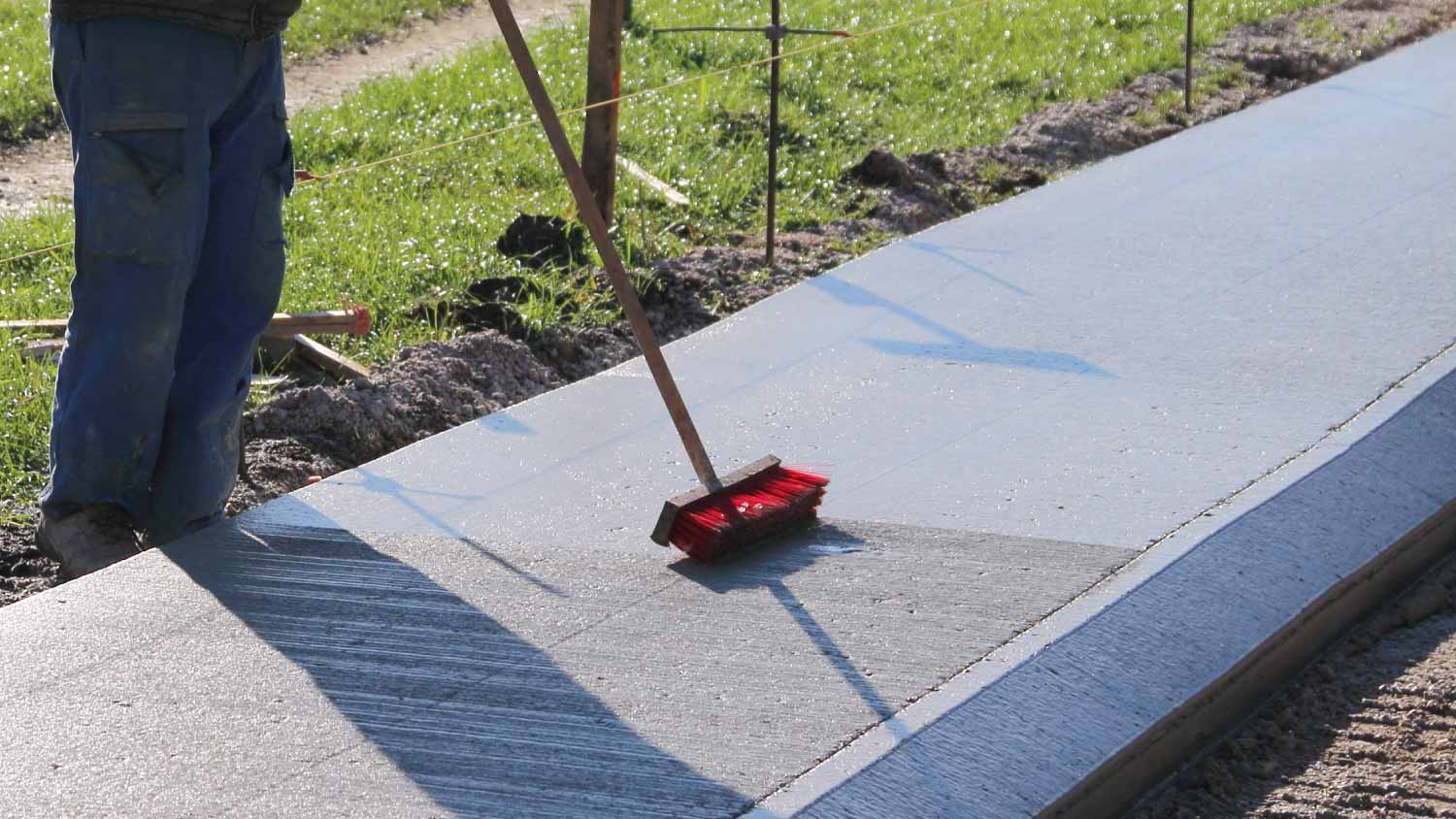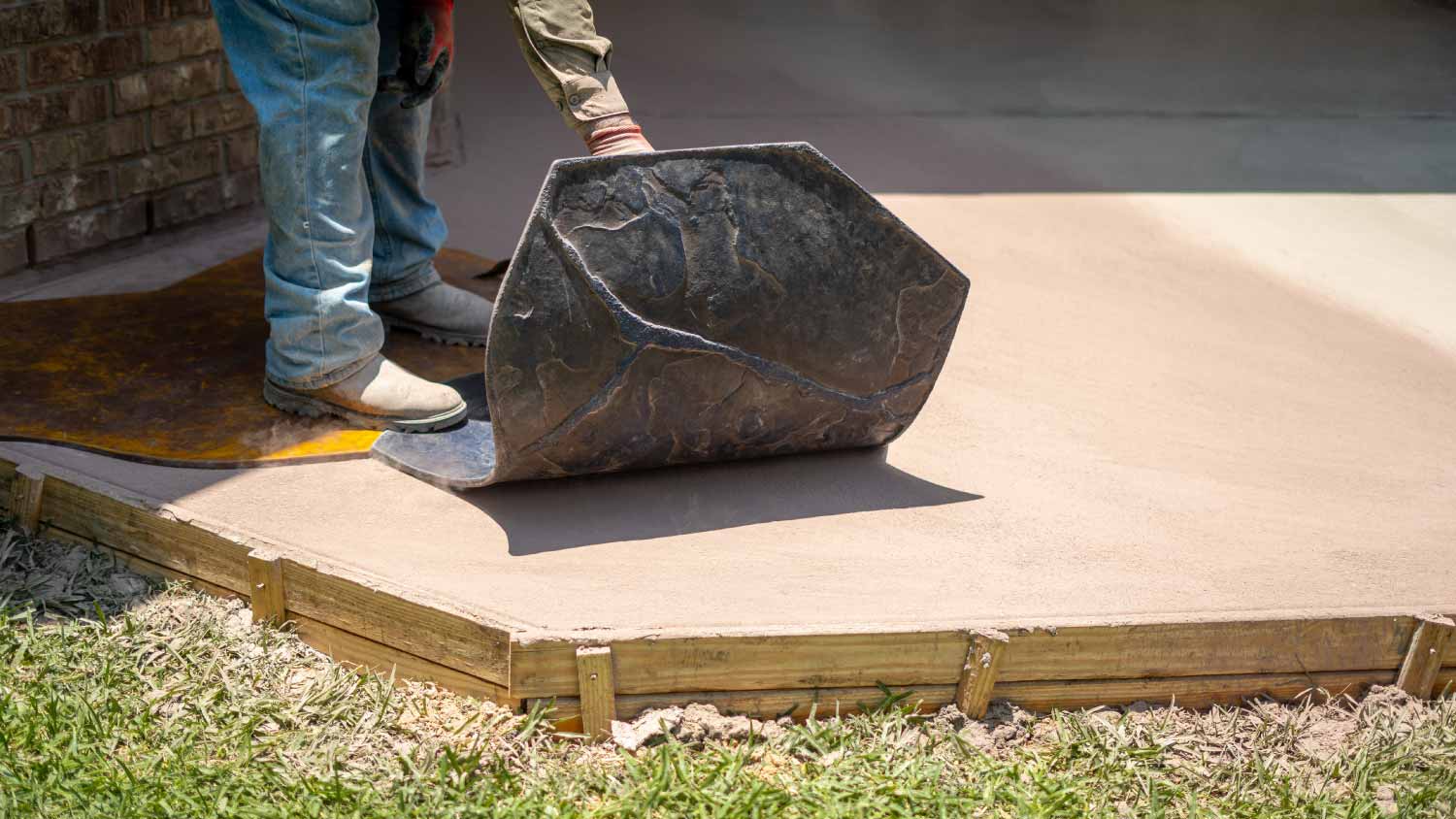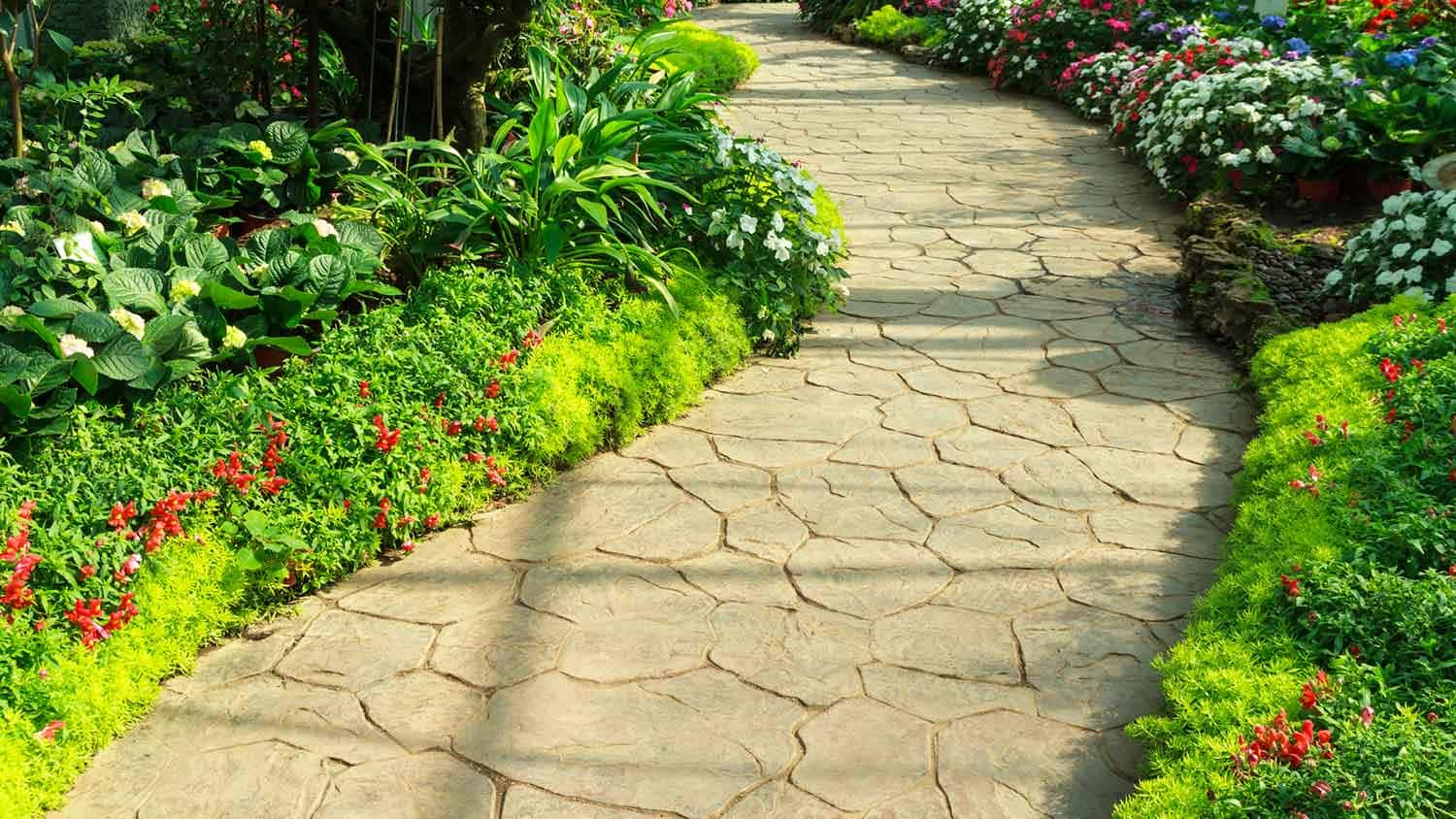Brushed vs. Stamped Concrete: Which Is Better?
Find a fitting finish for your concrete features


Brushed concrete offers a cost-effective, slip-resistant finish.
Stamped concrete gives a premium finish in a variety of patterns.
It’s easier to clean and maintain stamped concrete but more expensive to install.
If you’re adding a patio, walkway, pool deck, or other concrete features to your home, you’ll need to choose a finish. Choosing between two of the most popular types of concrete finishes—brushed and stamped concrete—can be confusing. We explore the differences, benefits, and drawbacks of each finish so you can decide which is better for your project.
Brushed vs. Stamped Concrete: Key Differences
When deciding between brushed and stamped concrete, you’ll want to consider the cost, appearance, and maintenance for each type of finish. Brushed concrete is budget-friendly and offers superior slip resistance but is limited when it comes to customization. Stamped concrete is attractive and highly customizable, but you’ll pay a premium for this finish.
What Is Brushed Concrete?

Brushed concrete (sometimes called “broomed” concrete) is finished by texturizing the surface with a stiff broom or brush to create thin, shallow grooves in the concrete. This texture provides slip resistance, which makes it ideal for pool decks, concrete pools, and other slippery surfaces. Brushed concrete is affordable and easy to install but offers limited customization options.
| Pros | Cons |
|---|---|
| Affordable | Not customizable |
| Slip-resistant | Less aesthetic appeal |
| Good for high-traffic areas | Can be difficult to clean |
Best for:
Pool decks and other slippery areas
Driveways
Budget-conscious homeowners
Pros of Brushed Concrete
Brushed concrete is one of the most affordable concrete finishes—it’s often the default finish for concrete installation, so it may even be included in the price of your project. It provides a subtly textured finish that’s safe to walk on in slippery conditions and is great in high-traffic areas. It’s easy to install and can even be a DIY project for handy homeowners.
Cons of Brushed Concrete
If you envision a specific look for your concrete feature, brushed concrete may not be the best option since it offers fewer customization options than stamped concrete. Its textured surface can also be harder to clean—all those little grooves can collect dirt, so you may need a pressure washer to really get it clean.
What Is Stamped Concrete?

This type of concrete uses premade stamps to create a pattern or texture on the concrete’s surface. Stamped concrete can mimic brick, stone, or even wood, or it can be patterned with any number of designs. Stamping concrete is a great way to get a premium concrete finish for your patio or walkway without having to install a large number of bricks, pavers, or stones. The pattern is stamped into larger slabs of concrete, making installation much faster than using the materials stamped concrete can look like.
| Pros | Cons |
|---|---|
| Highly customizable | Prone to cracking |
| Fast installation | More expensive |
| Aesthetically appealing | Not DIY-friendly |
Best for:
Patios and walkways
Homeowners who want a specific design style
Pros of Stamped Concrete
Stamped concrete is available in an almost endless array of colors, patterns, and finishes. No matter how specific your design vision is, stamped concrete can match it. A local concrete stamping pro can install stamped concrete quickly, resulting in an attractive, professional finish.
Cons of Stamped Concrete
Stamped concrete is more prone to cracking than its brushed counterpart since the grooves and depressions formed by the stamp patterns run deeper than a brushed finish. And while stamped concrete has more curb appeal, you’ll pay a higher up-front cost to have it installed. It’s also much less DIY-friendly since it requires more precise stamp placement to ensure the design is consistent.
Brushed vs. Stamped Concrete
Selecting the right concrete finish for your project depends on a number of factors. We’ve broken down which option comes out ahead in these categories.
Cost: Brushed Concrete
Brushed concrete is the more affordable option, averaging about $4 to $7 per square foot. In comparison, stamped concrete costs $8 to $28 per square foot, depending on the customization options you choose.
Appearance: Stamped Concrete
Stamped concrete wins out when it comes to curb appeal. This finish can be highly customized and gives a premium, upscale look to your concrete features. Brushed concrete has a more subtle, natural finish that’s more understated than stamped concrete.
Ease of Installation/DIYability: Brushed Concrete
While both finishes are fairly straightforward to install, brushed concrete has the advantage of being more DIY-friendly. Brushing is a more forgiving process, while stamping requires not only the stamp you want but also precision application for a perfect finish. Your best bet is to hire a concrete contractor for stamped concrete.
Ease of Repair: Brushed Concrete
Because stamped concrete is so highly customizable, it’s also harder to repair. Matching the pattern and color of stamped concrete to camouflage repairs can be complicated, but brushed concrete is easy to repair and re-brush for a consistent finish.
Durability: Tie
Once properly installed and sealed, both stamped and brushed concrete can last for decades of use. Brushed concrete has an advantage when it comes to crack resistance, but stamped concrete can hold up to higher-traffic use over time.
Resale Value: Stamped Concrete
If you’re looking for the biggest impact on your home’s value, choose stamped concrete. Its appealing aesthetics and high-end finish can add value to your home and make it more attractive to potential buyers.















